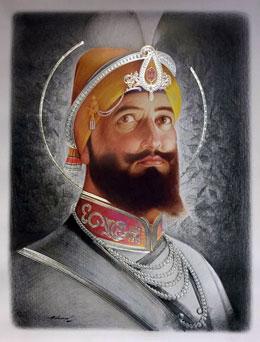The origins of Vaisakhi

Vaisakhi originated as a harvest festival in India's Punjab region hundreds of years ago.
In 1699, it took on special significance for Sikhs when Guru Gobind Singh — the tenth Sikh guru — created the order of the Khalsa.
Sikhs believe that on April 14, 1699 Guru Gobind Singh called all Sikhs to the Indian city of Anandpur Sahib, Punjab.
At the gathering he asked all those in attendance to uphold their faith and preserve the religion.
The Guru is then said to have lifted his sword and asked the crowd who was prepared to die for their faith.
One by one five men stepped forward, and they were all taken into a tent separately. After a short while Guru Gobind Singh reappeared with a bloodied sword, and the five of the men reappeared behind him - they were all dressed in blue garments.
Guru Gobind Singh called the five men the 'Panj Pyare', which means the Five Beloved Ones.
After they reappeared from the tent, the Panj Pyare were baptized. It's thought that once the Guru had finished the rituals, he lent down and asked them to baptize him.
Vaisakhi or Khalsa Day parades are led by five men in ceremonial dress - to represent the Panj Pyare - the five beloved ones.
To this day the five men are known as the first members of the Khalsa.









